1.Mount Huangshan
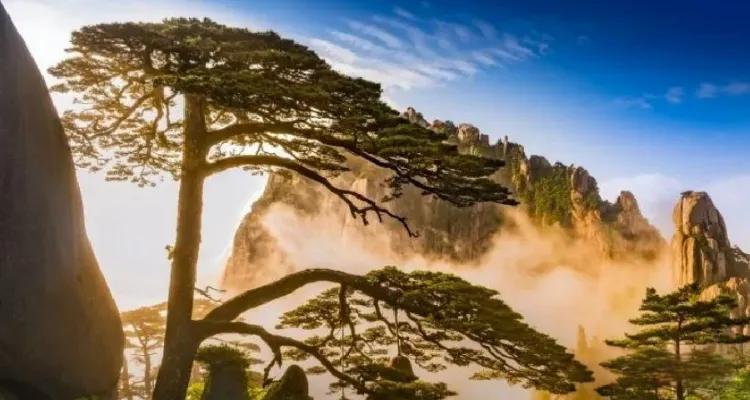
Mount Huangshan is located in Mount Huangshan City, Anhui Province. Mount Huangshan has been one of the most famous mountains in China since ancient times. Strange pines, strange rocks, sea of clouds and hot springs are known as the “four wonders” of Mount Huangshan. The ancients said that “the five mountains return without looking at the mountains, and Mount Huangshan return without looking at the mountains”.
2.jiuhua mountain

Jiuhua Mountain Scenic Area, located in Qingyang County, Chizhou City, Anhui Province, is one of the four famous Buddhist mountains in China and a site for Ksitigarbha Bodhisattva. It is characterized by Buddhist culture and beautiful natural landscapes. Known as the “Lotus Buddha Kingdom” and known as the “Number One Mountain in Southeast China”.
3.tianzhu mountain
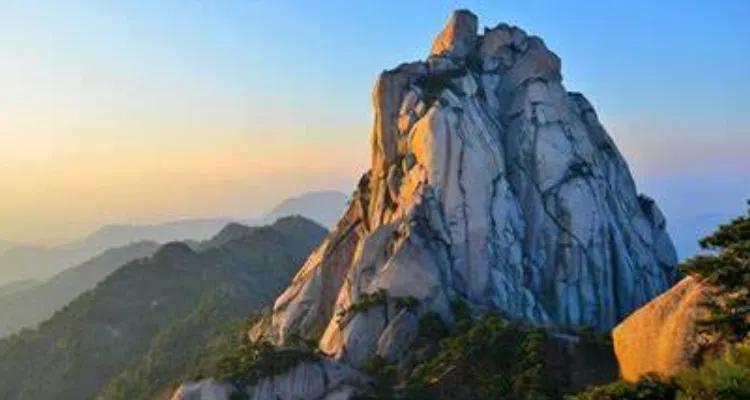
Tianzhu Mountain is located in Qianshan County, Anqing City, Anhui Province. Named after its main peak, which resembles a pillar of the sky. Within the 401 square kilometer scenic area, the ultra-high pressure metamorphic zone and its characteristic rock – eclogite – have attracted worldwide attention. Millions of years of geological magic has created Tianzhu Mountain, which is not only the largest mountain in the north, but also the beautiful mountain in the the Nanling Mountain.
4.qiyun mountain

Qiyun Mountain Scenic Spot is located about 15 kilometers west of Xiuning County, Mount Huangshan City, Anhui Province. Qiyun Mountain, known as White Mountain in ancient times, faces Mount Huangshan Mountain from north to south, reflecting each other’s splendor. It has always been known as “Mount Huangshan White Mountain is the best in the south of the Yangtze River”. It is named because the highest peak corridor cliff “one stone pierces the sky, and is in harmony with the clouds”.
5.Langya Mountain
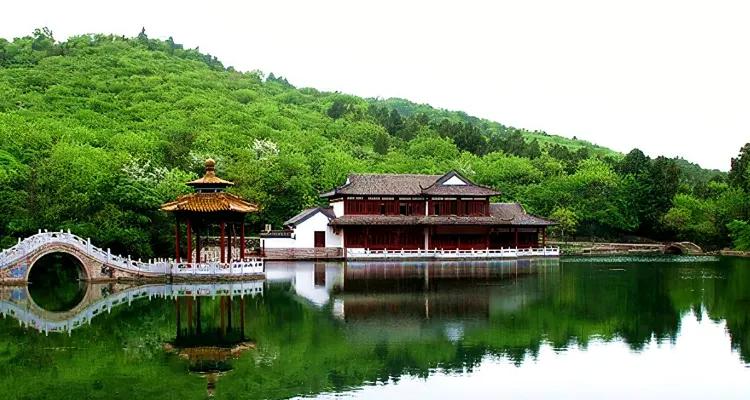
Langya Mountain is located in the southwest of Langya District, Chuzhou City, Anhui Province. The meaning of ‘Drunken Weng’ is not about wine, but about the relationship between mountains and waters. ‘The’ mountain ‘in’ Drunken Weng ‘refers to Langya Mountain, where many scenic spots revolve around the’ Drunken Weng Pavilion ‘and have a strong humanistic atmosphere.
6.Mt. Palgongsan
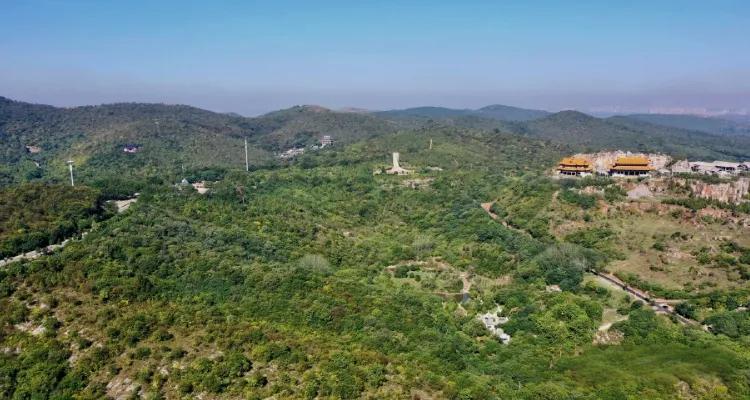
Bagongshan is located in Huainan City, Anhui Province. Bagongshan is a beautiful historical and cultural mountain, with over 40 peaks undulating and obstacles within the scenic area, possessing rich historical heritage and cultural connotations.
7.Tiantangzhai
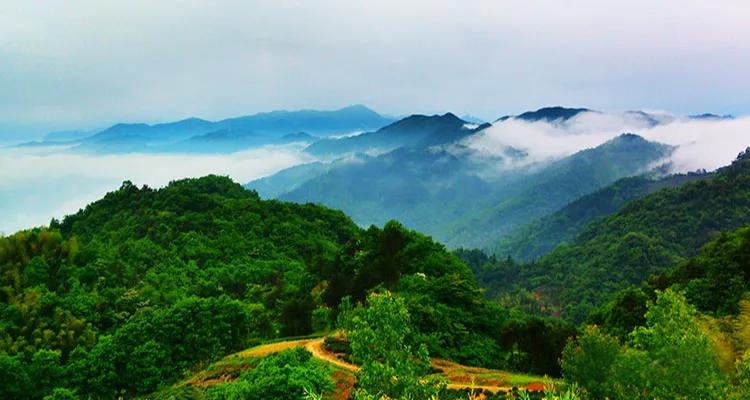
Tiantangzhai Scenic Area is located in the southwest of Jinzhai County, Anhui Province, in the hinterland of the Dabie Mountains. Tiantangzhai was formerly known as “Duoyun Mountain”, with its highest peak reaching an altitude of 1729.13 meters. It is one of the main peaks of the Dabie Mountains and was formerly known as “the first pass in the southeast of Wu and Chu”; There are 108 waterfalls of various sizes in the scenic area, with a forest coverage rate of 96.5%, known as the “last primitive forest in East China”.
8.hongcun village
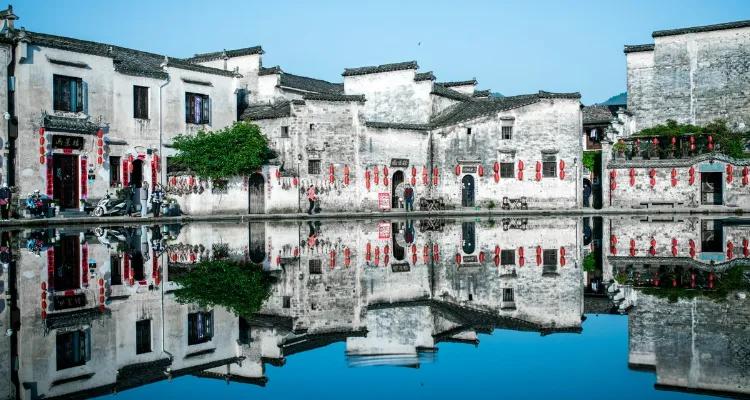
Hongcun, an administrative village under the jurisdiction of Hongcun Town, Yi County, Mount Huangshan City, Anhui Province, is a traditional Chinese village. It is the most representative village among the Hui style residential villages, known as the “village in Chinese painting”. The Oscar winning foreign language film “Crouching Tiger, Hidden Dragon” was filmed here – at Nanhu Bridge outside the village. From the overall appearance, Hongcun is a unique ancient village in the shape of a cow, with three classic landscapes in the village: Shuizhen, Nanhu, and Yuenuo.
9.Xidi Ancient Town
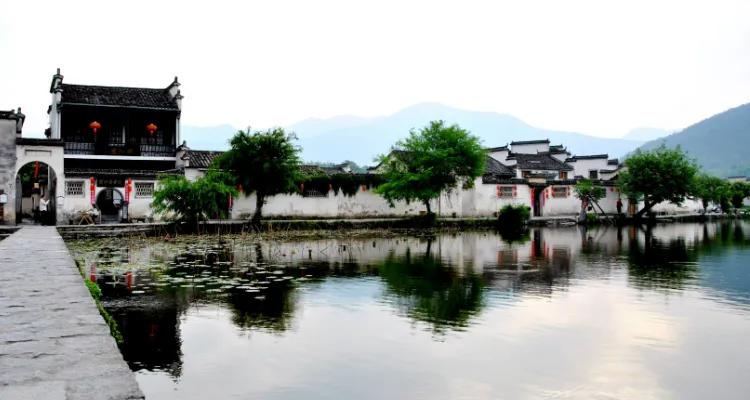
Xidi Village, an administrative village under the jurisdiction of Xidi Town, Yi County, Mount Huangshan City, Anhui Province, is a traditional Chinese village. Xidi Village has a history of nearly a thousand years. It was listed as a world cultural heritage in 2000, and has the reputation of “the most beautiful village in the world” and “the treasure house of ancient residential buildings”. There are hundreds of ancient Ming and Qing dynasty houses preserved in the village, with buildings and roads paved with marble. Two clear springs pass through the village, and 99 high walled deep alleys feel like being in a maze.
10.Huizhou Ancient City

Huizhou Ancient City, located in Huicheng Town, Shexian County, Mount Huangshan City, Anhui Province, was founded in the Qin Dynasty. It is an ancient city with a unique style of “city as a whole” and is one of the four ancient cities in China. The ancient residential buildings in the scenic area are interwoven together, exuding a quaint charm, like a magnificent historical museum. Among several city gates, the South Qiao Tower is the most distinctive, and Xuguo Stone Archway is the most essence of the ancient city.
11.sanhe ancient town
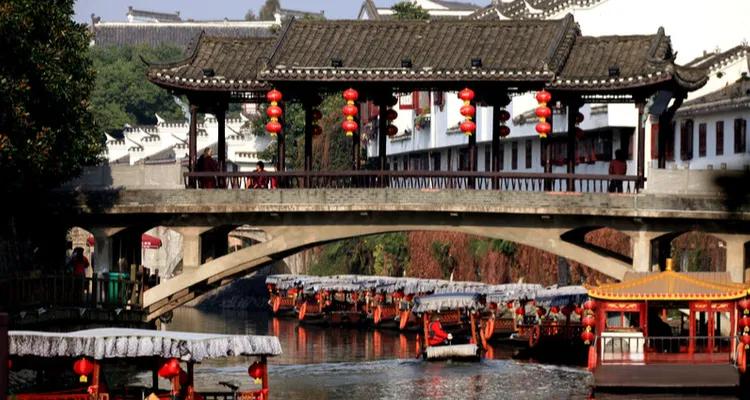
Sanhe Ancient Town, a famous historical and cultural town in China, is located in Feixi County, Hefei City, Anhui Province. Named after the three rivers that flow through it: Fengle River, Hangbu River, and Xiaonan River. The old streets of the ancient town are paved with bluestone slabs, polished smooth by thousands of years of human traffic. The Huizhou style buildings on both sides are unique, with many walls made directly of bluestone bricks. The overhanging eaves on the horsehead walls are much more exaggerated than those on the horsehead walls of Hongcun and Xidi.
12.Longchuan Village

Longchuan Village, an administrative village under Yingzhou Town, Jixi County, Anhui Province, is an ancient Huizhou village and is now a historical and cultural protection zone in Anhui Province. The Hu family in Longchuan has talented people and is a famous “Jinshi Village” in Huizhou. Especially in the Ming Dynasty, the village reached its peak of development, with over 10 people becoming jinshi.
13.Chaji Village
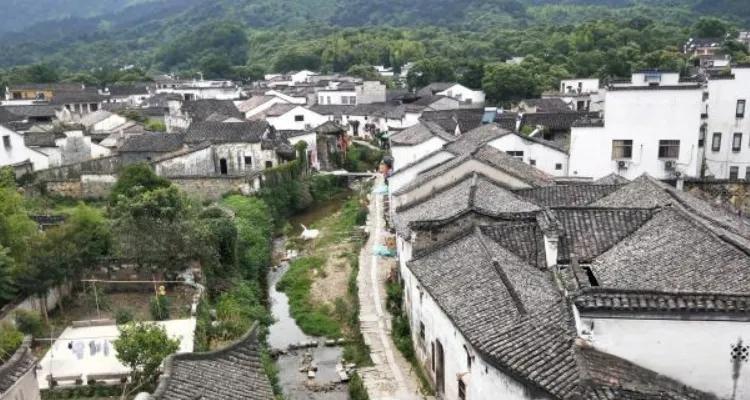
Chaji Village, located in Taohuatan Town, Jing County, Xuancheng City, Anhui Province, is a relatively well preserved ancient architectural complex. The three streams of Cenxi, Xuxi, and Shixi converge in the village, and Huizhou style buildings with white walls and black tiles are built along the stream.
14.Tachuan Village
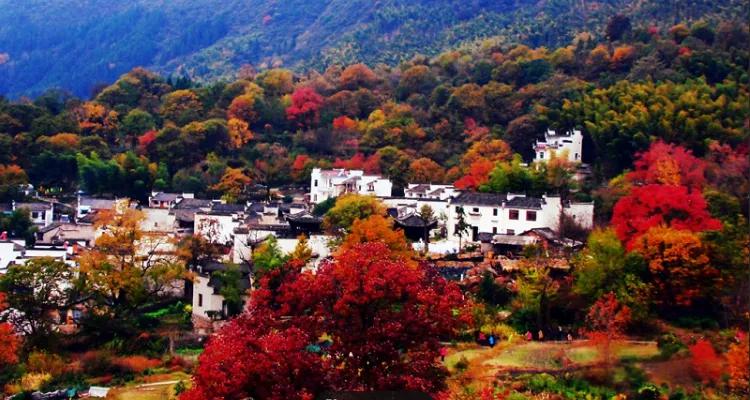
Tachuan Village, also known as Tashang, is located in Hongcun Town, Yi County, Mount Huangshan City, Anhui Province. In the eyes of photography lovers, China has three major places to watch autumn, namely Tachuan in southern Anhui, Xiangshan in Beijing and Jiuzhaigou Valley Scenic and Historic Interest Area in Sichuan. Although Tachuan is not as famous as Hongcun, Tachuan’s autumn scenery is indeed a popular destination in the photography industry.
15.Cheng Kan

Chengkan, named Longxi in ancient times, was originally under the jurisdiction of Shexian County, the capital of Huizhou, and is now under the jurisdiction of Huizhou District, Mount Huangshan City, Anhui Province. It is one of the best preserved ancient villages in China today. Surrounded by mountains on eight sides, resembling the Eight Trigrams diagram in the Book of Changes, a stream flows around the village, forming a shape resembling a yin-yang fish. In the Book of Changes, yang is called “cheng” and yin is called “kan”, hence the name.
16.Former Residence of Li Hongzhang
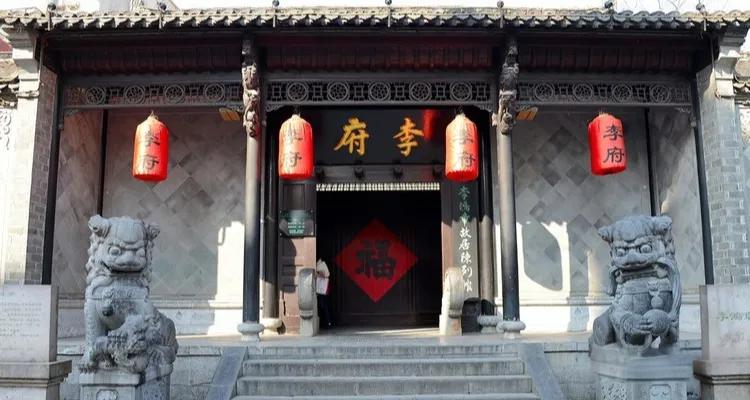
The former residence of Li Hongzhang, also known as the old residence of the Li family, Li Mansion, and Li Hongzhang Mansion, is located on Huaihe Road in Luyang District, Hefei City, Anhui Province. It is the home of Li Hongzhang, a famous statesman of the late Qing Dynasty, and a typical residential building in the Jianghuai region of the late Qing Dynasty. It is the largest remaining celebrity residence in Hefei.
17.wanfo lake
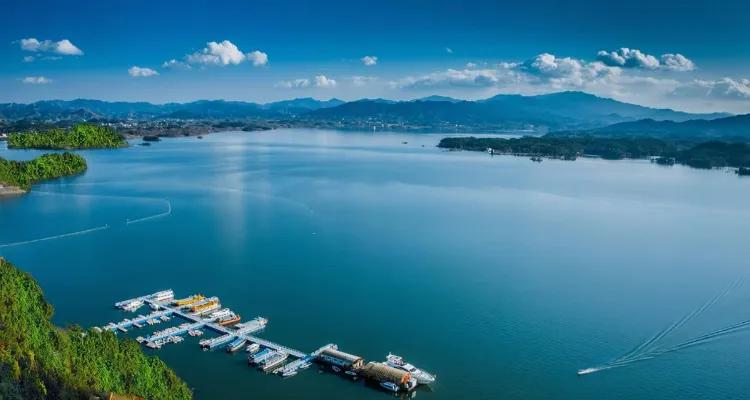
Wanfo Lake is located in Wanfo Lake Town, Shucheng County, Lu’an City, Anhui Province. To visit Wanfo Lake, one is to enjoy the lake scenery. The lake water is clear and there are small islands in the lake; The second is to look at water conservancy engineering. The Wanfo Lake Dam was built in 1960 and was completely built by hand by the people during three years of natural disasters, which is very remarkable.
18.taiping lake

Taiping Lake is located in Mount Huangshan District, Mount Huangshan City, Anhui Province. Taiping Lake has been rated as “the most beautiful place in China” and “a civilized scenic spot in Anhui Province” as well as “a hot tourist destination in China”. ·The water of Taiping Lake is gathered from the natural spring water of Mount Huangshan Mountain and Jiuhua Mountain.
19.Daishan Lake
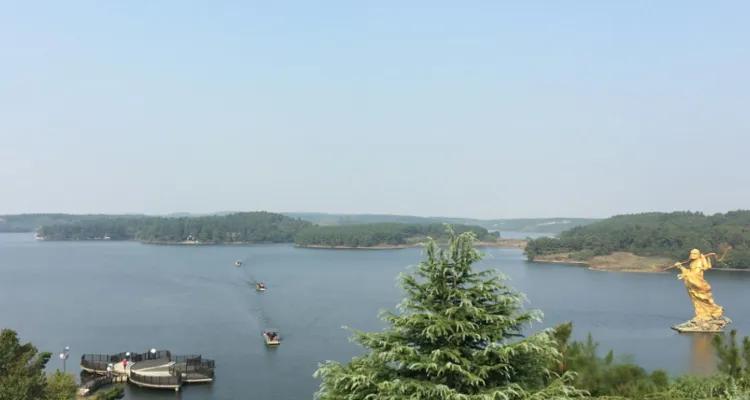
Daishan Lake is located in Gucheng Town, Feidong County, Hefei City, Anhui Province. Daishan Lake has a subtropical climate, warm and humid, with an average annual temperature of 15.7 degrees Celsius. The forest coverage rate in the mountainous area by the lake is over 90%, with more than 400 species of plants.
20.Huihang Ancient Road
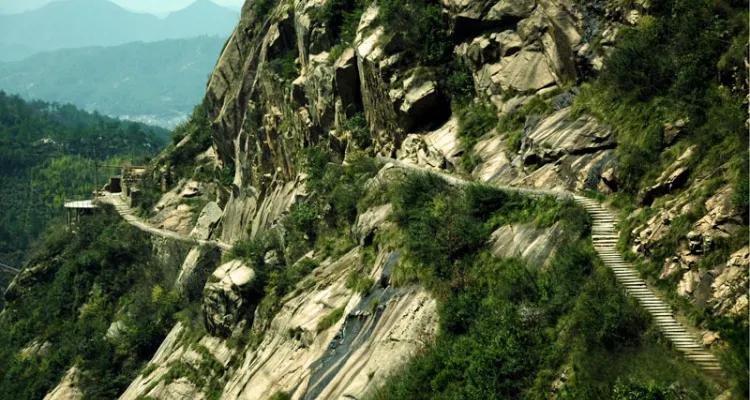
The Huizhou Hangzhou Ancient Road is 15 kilometers long, connecting Fuling Town in Jixi County, Anhui Province and Maxiao Township in Lin’an City, Zhejiang Province. It was an important transportation route connecting Huizhou and Hangzhou in ancient times, and has now become a paradise for novice hikers.
21.Xin’anjiang Landscape Gallery
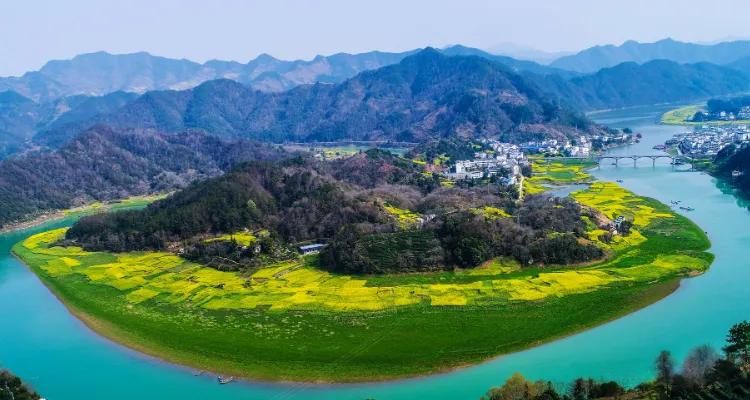
Xin’an River Landscape Gallery Scenic Spot, located in Shendu Town, She County, Mount Huangshan City, Anhui Province, with a total length of about 100 miles, is a shining pearl on the golden tourism line of Mount Huangshan – She County, an ancient city in Huizhou – Qiandao Lake. The ecological environment on both sides of the Xin’anjiang Landscape Gallery is excellent, presenting a three-dimensional ecological pattern of high mountains and forests, Zhongshan tea, low mountain fruits, and fish in the water. It complements the ancient villages and houses with pink walls and black tiles, creating a beautiful landscape painting of green mountains and water villages in the painting.
22.Caishiji
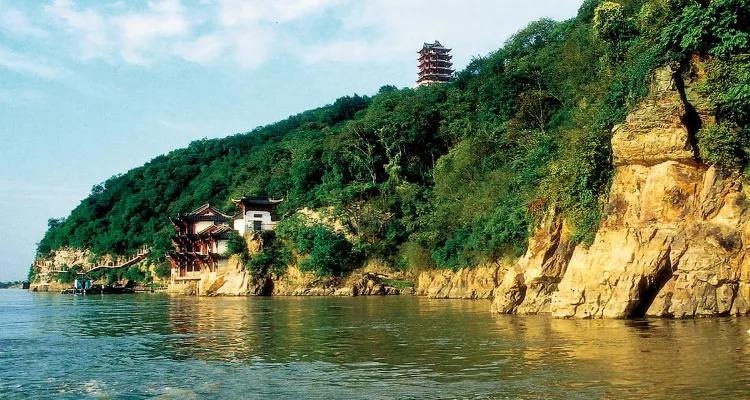
Caishiji, also known as Niuzhuji, is located at the foot of Cuiluo Mountain, 5 kilometers southwest of Ma’anshan City, Anhui Province. Along with Chenglingji in Yueyang and Yanziji in Nanjing, Caishiji is known as the “Three Peaks of the Yangtze River”, and with its unique natural landscape and profound cultural connotations, Caishiji is renowned as the top of the Three Peaks. Caishiji is the final resting place of the great Tang Dynasty poet Li Bai.
